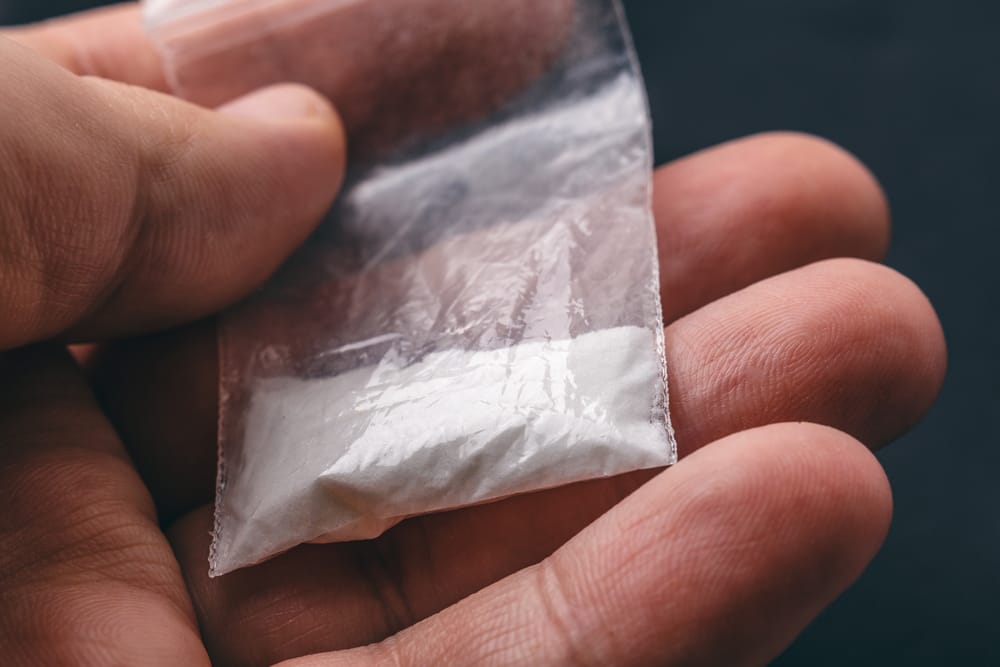Did you know that cocaine is sometimes used for legitimate medical purposes, primarily as a topical anesthetic? Most people don’t know this, because cocaine is mostly used as a recreational drug. When sold to people for recreational purposes, cocaine can be very dangerous. The dangers of using cocaine can include impaired judgement, engaging in risky behaviors like needle sharing, unsafe sex and drugged driving, as well as experiencing unexpected side effects. Unexpected effects from cocaine can be caused by negative interactions that occur when it is mixed with alcohol or medications, as well as by hidden ingredients that drug dealers use as cutting agents to dilute or extend the amount of the cocaine they sell with the aim of garnering greater profits.
Cocaine Basics
What’s in cocaine? The answer is sometimes more complicated than you might expect. The primary ingredient of cocaine, also known as “coke,” “blow” and “snow, is cocaine hydrochloride. This is the purified chemical ingredient that is isolated from the leaves of the coca plant, which grows in South America. Once coca leaves have been processed into cocaine, it is distributed as either a white crystalline powder, or as hard crystalline rocks. The rocks are the base form of cocaine that has been heated to remove the hydrochloride and produce “crack,” the street name given to freebase cocaine.
Cutting Agents Used in Cocaine
Buyers generally have no idea what’s in cocaine, or how “pure” it is, and the person they buy it from may not know, either. While some drug users buy cocaine with the intention of mixing it with heroin to create a “speedball,” it is typically the dealers who mix cocaine with cutting agents to bulk up their supply before selling it to unsuspecting customers. For drug dealers, selling cocaine is big business, and they often bank on the fact that nobody will notice if they increase its volume by mixing it with another powdery substance, such as:
- Flour
- Cornstarch
- Talcum powder
- Chalk
- Baking soda, ascorbic acid
- Quinine
- Boric acid
- Laundry detergent
- Laxatives
- Meat tenderizer
- Lactose and other sugars
- Plaster of Paris
- Caffeine
These cutting agents, while not healthy by any means, may be considered relatively benign when compared with other substances and drugs that dealers sometimes use as cocaine additives or cutting agents. Drugs typically used as cutting agents in cocaine include:
- Amphetamine — a psychoactive stimulant
- Strychnine — a stimulant
- Methylphenidate — a stimulant
- Lidocaine, procaine, benzocaine or tetracaine — local anesthetics
- Marijuana, hashish, PCP, LSD — illicit drugs
- Fentanyl — a potent anesthetic that can be made into a fine white powder, and is more than 50 times stronger than heroin
Dangerous and Deadly Cocaine Cutting Agents
In recent years, experts have issued reports about fentanyl and its derivatives, highlighting the fact that there have been higher rates of overdose deaths in areas where fentanyl was used as a cutting agent in other drugs. They warn that most drug users don’t seek out fentanyl, but it is increasingly common to find it mixed in with cocaine or sold as cocaine.
Cautionary Tale
In March 2017, a married couple died after using cocaine that had been mixed with carfentanil, a drug that is 1,000 times more powerful than morphine. Medical examiners in Ohio, the state where they died, have not been able to determine if the couple knew the cocaine they bought had been laced with this dangerous cutting agent. Most likely not, but it serves as a tragic example of the dangers inherent in cocaine use. Sources: Common Cocaine Cutting Agents. Clinical Services of Rhode Island. https://clinicalservicesri.com/cocaine-abuse/common-cutting-agents/ What is cocaine? National Institute on Drug Abuse, NIH, May 2016. https://www.drugabuse.gov/publications/research-reports/cocaine/what-cocaine https://www.drugabuse.gov/publications/drugfacts/cocaine Fatal Overdoses From Fentanyl Sold as Cocaine Detailed in Harrowing CDC Report. Gillian Mohney. ABC News, February 2017. https://abcnews.go.com/Health/fatal-overdoses-fentanyl-sold-cocaine-detailed-harrowing-cdc/story?id=45245498 Spirit Airlines Pilot and Wife Found Dead by Kids Had Overdosed on Cocaine and Animal Tranquilizer. Chris Harris. People Crime, May 2017. https://people.com/crime/spirit-airlines-pilot-wife-found-dead-children-overdosed-cocaine-animal-tranquilizer/

